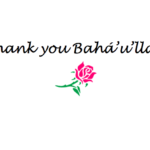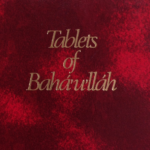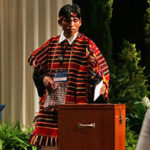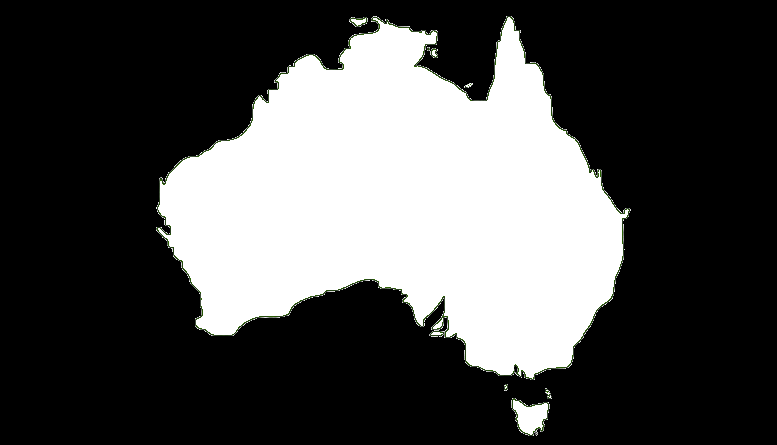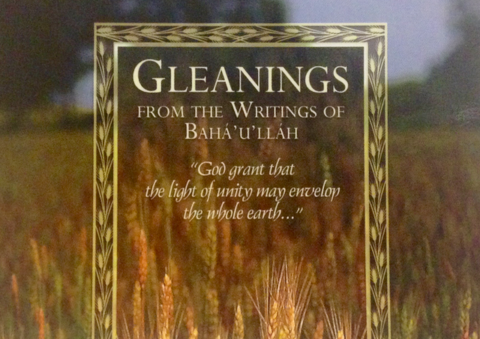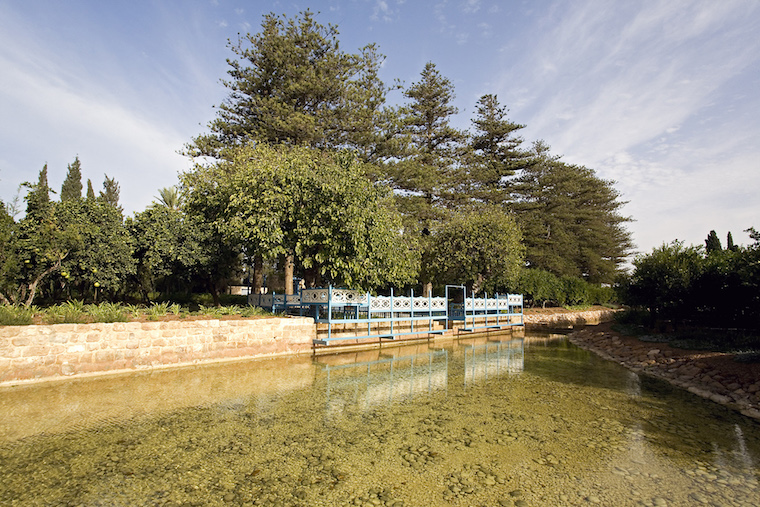
The Green Island and the Angel of Trustworthiness

In Tarazat (Ornaments) Bahá’u’lláh counsels his followers to be trustworthy. In describing trustworthiness, Bahá’u’lláh recounts a vision which he saw while on “the Green Island”.
The Green Island is a small island of land created by a fork in a stream. It is near the prison city of Akka. Knowing Bahá’u’lláh’s love for nature, Abdu’l Baha leased the land in which the Green Island was found, anticipating that Bahá’u’lláh would be able to enjoy an access to nature that he had been denied in the years of imprisonment in Akka. The creation of the garden on the land was a work of love. Soil for the plants had to be brought. Plants also were brought – including from far away Persia, so that they could be planted in the garden. It was a journey requiring months – all the while the plants were being cared for, so that they could be planted on their arrival.
Adib Taherzadeh provides a description of the Green Island (also known as the “Garden of Ridvan”.
The Garden of Ridván was situated on a very small island. The little river, which emptied into the sea, divided itself into two streams surrounding that small area of land. In the time of Bahá’u’lláh the garden was laid out in flower-beds and there were many ornamental shrubs and fruit trees. There was a splashing fountain from which water was fed to all parts of the garden. As it flowed, it came rippling down in a broad stream over a stone platform under two large mulberry trees. The stream which flowed by the island was about fourteen to fifteen feet wide and three feet deep; fish were darting about it in abundance. It was fringed with weeping willows, and the fragrance of jasmine and orange blossoms filled the air. Most of these features are preserved today, except that there is no water circling the garden, for the streams have been diverted in recent times.
Since Adib Taherzadeh wrote, as illustrated in the image above, the Baha’i community has restored the area to its appearance and beauty at the time of Bahá’u’lláh. An artificial stream has been constructed that cycles water around the island, so that it appears as it did in those years.
The vision Bahá’u’lláh describes of trustworthiness, mentioned above, which appears in Ishraqat and also Tarazat, is as follows.
We will now mention unto thee Trustworthiness and the station thereof in the estimation of God, thy Lord, the Lord of the Mighty Throne. One day of days We repaired unto Our Green Island. Upon Our arrival, We beheld its streams flowing, and its trees luxuriant, and the sunlight playing in their midst. Turning Our face to the right, We beheld what the pen is powerless to describe; nor can it set forth that which the eye of the Lord of Mankind witnessed in that most sanctified, that most sublime, that blest, and most exalted Spot. Turning, then, to the left We gazed on one of the Beauties of the Most Sublime Paradise, standing on a pillar of light, and calling aloud saying: ‘O inmates of earth and heaven! Behold ye My beauty, and My radiance, and My revelation, and My effulgence. By God, the True One! I am Trustworthiness and the revelation thereof, and the beauty thereof. I will recompense whosoever will cleave unto Me, and recognize My rank and station, and hold fast unto My hem. I am the most great ornament of the people of Bahá, and the vesture of glory unto all who are in the kingdom of creation. I am the supreme instrument for the prosperity of the world, and the horizon of assurance unto all beings.’ Thus have We sent down for thee that which will draw men nigh unto the Lord of creation.”
O people of Bahá! Trustworthiness is in truth the best of vestures for your temples and the most glorious crown for your heads. Take ye fast hold of it at the behest of Him Who is the Ordainer, the All-Informed.[1]
Trustworthiness is an ethical quality. Bahá’u’lláh’s advice points to its importance to a healthy society. If we cannot rely on the trustworthiness of our fellow human beings it undermines much of what makes society function properly.
A well-known game in game theory is the “prisoner’s dilemma” in which two prisoners can either trust or not trust each other. The game is set up in such a way that the prisoners collectively do best if they are both honest or trustworthy (and do not seek to cheat the other), but one prisoner can obtain extra benefit (at cost to the other) if that prisoner is dishonest. Game theory studies how a prisoner (player) ought to behave in such a game. One researcher, Axelrod, famously studied the dilemma in the context of evolution and multiple games between the same players. He found that a player would do best if they were “trustworthy” to begin with, but then reciprocated what the other player did. (tit for tat). In other words, if the other player proved untrustworthy, the first player would also cheat in future, and vice versa. The inference is that if every one is trustworthy it achieves the best overall result. Whereas cheating will evoke cheating in return leading to the worst possible result. The “game” which is a simple model of real-world human behaviour has been widely studied; including in the context of the impact of religiosity on “prosocial” behaviour. Some experimental studies have found that priming test subjects with thoughts of God, can have prosocial effects on individuals (i.e. reduce “cheating”).
It’s clear enough that in an environment where “cheating” is endemic, the whole of society suffers. Even in such environments, a sub-group can establish patterns of cooperative behaviour that are of overall benefit to the cooperative network and which over time can change the overall environment. The point of the kind of studies described above, is how to foster overall community welfare by gaining a better understanding of what fosters trustworthy behaviour.
Another dimension we see in Bahá’u’lláh’s quotation on trustworthiness, is that trustworthiness is a spiritual reality. Here it is personified in what appears as an angelic figure. This metaphor suggests that trustworthiness is more than merely a description of material behaviours. Trustworthy behaviour is the material shadow of a deeper spiritual truth.
Sources:
Adib Taherzadeh, Revelation of Bahá’u’lláh, Volume 4
The Origin and Evolution of Religious Prosociality
Robert Axelrod, The Evolution of Cooperation
(This article is the 167th in a series of what I hope will be 200 articles in 200 days for the 200th anniversary of the birth of Bahá’u’lláh. The anniversary is being celebrated around the world on 21 and 22 October 2017. The articles are simply my personal reflections on Bahá’u’lláh’s life and work. Any errors or inadequacies in these articles are solely my responsibility.)
Image Credits:
Bahá’í World News Service
Holy place restoration sheds light on region’s heritage
With the restoration of the canals around the Ridvan Garden, its carved blue benches are once again cantilevered out over water.
http://news.bahai.org/story/797/


